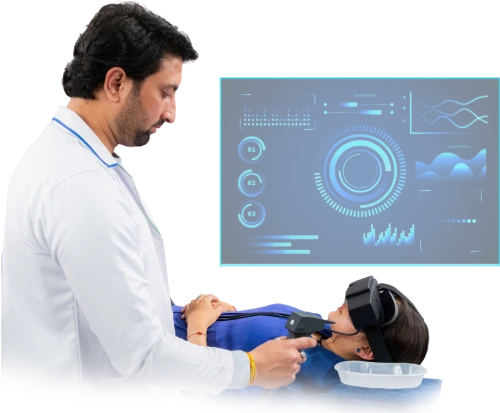


NeuroEquilibrium VNG assesses peripheral and central vestibular functions through:
These diagnostic tests are integral to Vertigo Diagnosis, helping doctors to identify the root causes of vertigo and balance disorders.




For doctors and patients, NeuroEquilibrium VNG represents a state-of-the-art solution for diagnosing and understanding vertigo and related disorders.
A VNG test is a harmless way to evaluate how the inner ear works and central motor functions through testing involuntary eye movements. Doctors commonly look at dizziness, vertigo and balance problems with this test. Watching the patient’s eyes move during certain tests helps healthcare professionals know if the problem comes from the ears or from the brain.
As you participate in the test, you will put on special goggles with infrared cameras that keep a record of your eye behavior. Ocular testing, positional testing and caloric testing are usually part of the procedure. They are used to understand how well the vestibular system works and notice any problems.
The VNG test is instrumental in diagnosing various vestibular disorders, including:
Preparation is crucial for accurate results. You may be advised to:
Always follow the specific instructions provided by your healthcare provider.
VNG test is both safe and tolerable. It is possible for some people to feel dizzy or nauseous at the time or after the test, mostly during the caloric testing. Most of the symptoms usually end up passing fast. If you still feel dizzy after the test, get someone you trust to take you home.